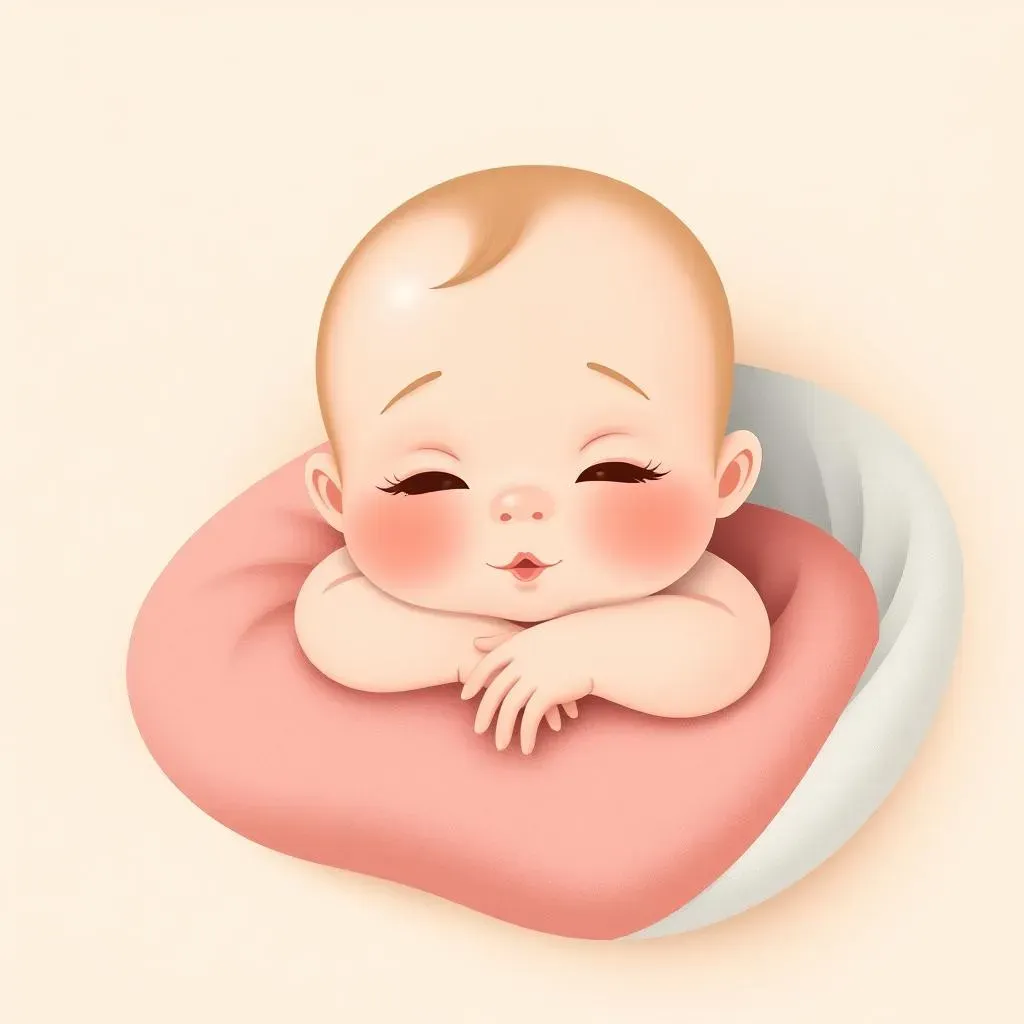Table of Contents
Figuring out the best way to keep your little one comfy and safe can be a real head-scratcher, especially when it comes to sleep. You might be wondering, "Is there a simple, safe way to prop up my baby without shelling out for fancy baby gear?" Well, let's talk about how to make a baby pillow with a towel. It's a surprisingly handy trick that many parents use for travel, quick naps, or just when they need a little extra support for their baby. This article will walk you through why a towel can be a great, temporary solution for a baby pillow, highlighting the benefits and, more importantly, the precautions you need to take. We’ll dive into a super easy, step-by-step guide on folding a towel just right, so it's safe and comfy for your little one. Plus, we'll explore a no-sew method using a towel and pillowcase for extra softness. But it's not just about folding a towel; it’s about ensuring your baby's safety and comfort. We'll cover essential tips to keep in mind, so you can rest easy knowing your baby is safe. And, for those moments when you need a quick fix, we’ll share some creative ways to use towels as temporary baby pillows. Let's get started and turn that ordinary towel into a cozy haven for your baby!
Why Choose a Towel for a Baby Pillow? Benefits and Precautions
Why Choose a Towel for a Baby Pillow? Benefits and Precautions
So, you're thinking about using a towel as a baby pillow? It's not as crazy as it sounds! There are some real perks, especially when you're in a pinch. Towels are super accessible – you've got them at home, in your diaper bag, practically everywhere. They're also easy to clean, which is a huge win when dealing with baby messes. Plus, you can adjust the thickness to get just the right amount of support. But before you go all in, let's talk safety, because that's the non-negotiable part.
Now, while towels can be convenient, they're not without their risks. The biggest concern is SIDS (Sudden Infant Death Syndrome). Soft bedding, including thick or fluffy pillows, can increase the risk of suffocation. Babies don't have the neck strength to move away if their face gets pressed against something soft. That's why pediatricians generally recommend a flat, firm sleep surface for infants. So, if you're considering a towel pillow, it's crucial to use it sparingly and always under direct supervision. Think of it as a temporary fix, not a long-term sleep solution. It's all about weighing the benefits against the potential dangers and making an informed choice for your little one.
When considering a towel pillow, think about the material, too. Opt for soft, breathable fabrics like cotton or muslin. Avoid anything too plush or textured, as these can pose a suffocation hazard. Also, make sure the towel is clean and free of any loose threads or tags that could be a choking hazard. And remember, a towel pillow should never be used in a crib or bassinet unsupervised. It's best for supervised naps or tummy time, where you can keep a close eye on your baby. Ultimately, the goal is to provide a little extra support without compromising safety. It's a balancing act, but with the right precautions, a towel pillow can be a handy tool in your parenting arsenal.
StepbyStep Guide: Folding a Towel into a Safe Baby Pillow
StepbyStep Guide: Folding a Towel into a Safe Baby Pillow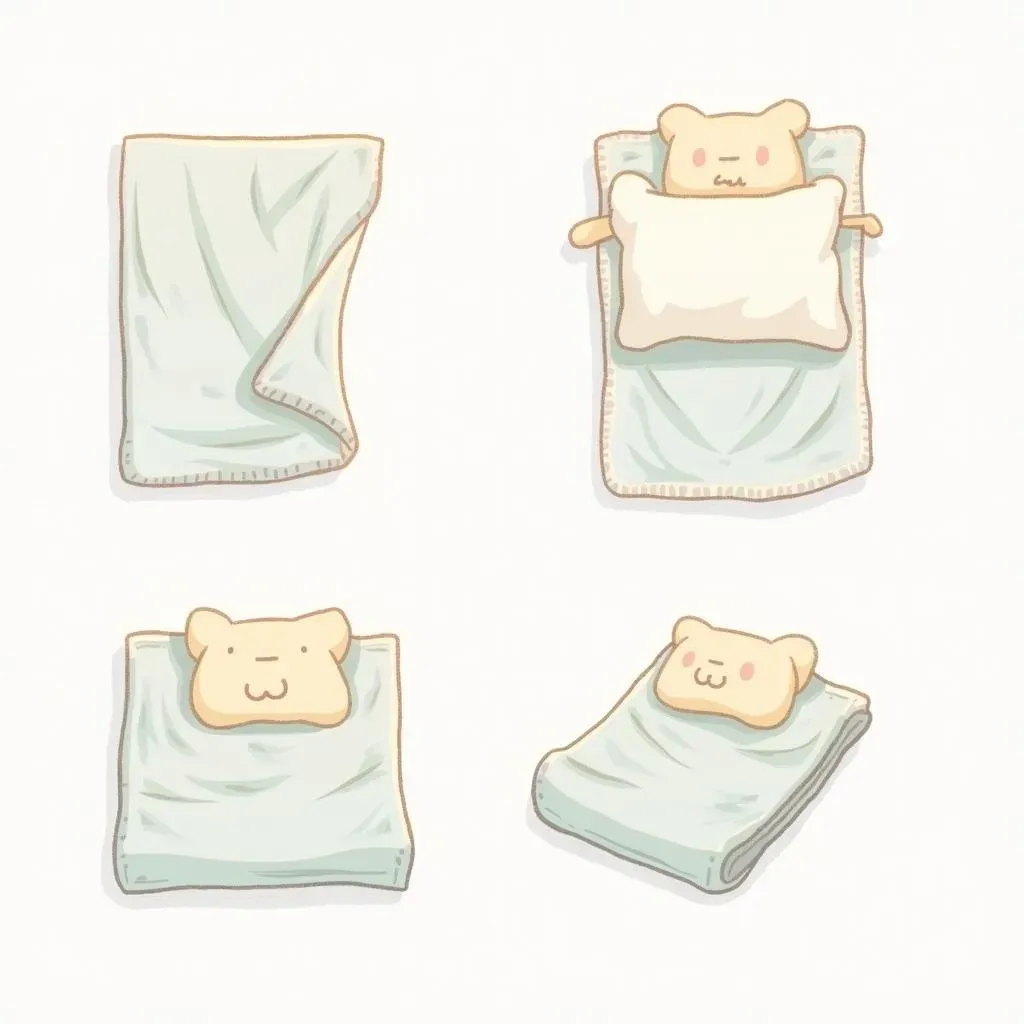
Alright, let's get down to business and show you how to fold a towel into a safe baby pillow. First things first, grab a soft, clean towel – a lightweight cotton or muslin towel works best. Lay it out flat on a clean surface. Now, here's the key: you're going to fold it in thirds lengthwise. This creates a long, narrow strip. Next, fold that strip in half, and then in half again. This creates a compact, layered pillow. The goal is to make it firm enough to offer a little support, but not so thick that it poses a suffocation risk. Remember, less is more when it comes to baby pillows!
Once you've folded your towel, give it a little test. Press down on it – it should feel firm and compact, not squishy or overly soft. If it feels too thick, unfold it and try folding it in half just once instead of twice. The right thickness will depend on the size of your towel and your baby's needs. And always, always supervise your baby when using a towel pillow. Never leave them unattended, especially in a crib or bassinet. This is a temporary solution for supervised naps or tummy time, not a replacement for a safe sleep environment.
Step | Description |
|---|---|
1 | Lay a soft, clean towel flat. |
2 | Fold lengthwise into thirds. |
3 | Fold in half, then in half again (or just once if needed). |
4 | Test for firmness – it should be compact, not squishy. |
Now, let's talk about placement. When using your DIY towel pillow, position it so it supports your baby's upper back and head, not just their neck. This helps keep their airway open and prevents their chin from tucking into their chest. And be sure to avoid placing the pillow too high up, as this can cause discomfort or even breathing difficulties. Always err on the side of caution and prioritize your baby's safety above all else. With a little practice, you'll get the hang of folding the perfect towel pillow for your little one. Just remember to keep it simple, keep it safe, and always keep a close eye on your baby.
Making a NoSew Baby Pillow with a Towel and Pillowcase
Making a NoSew Baby Pillow with a Towel and Pillowcase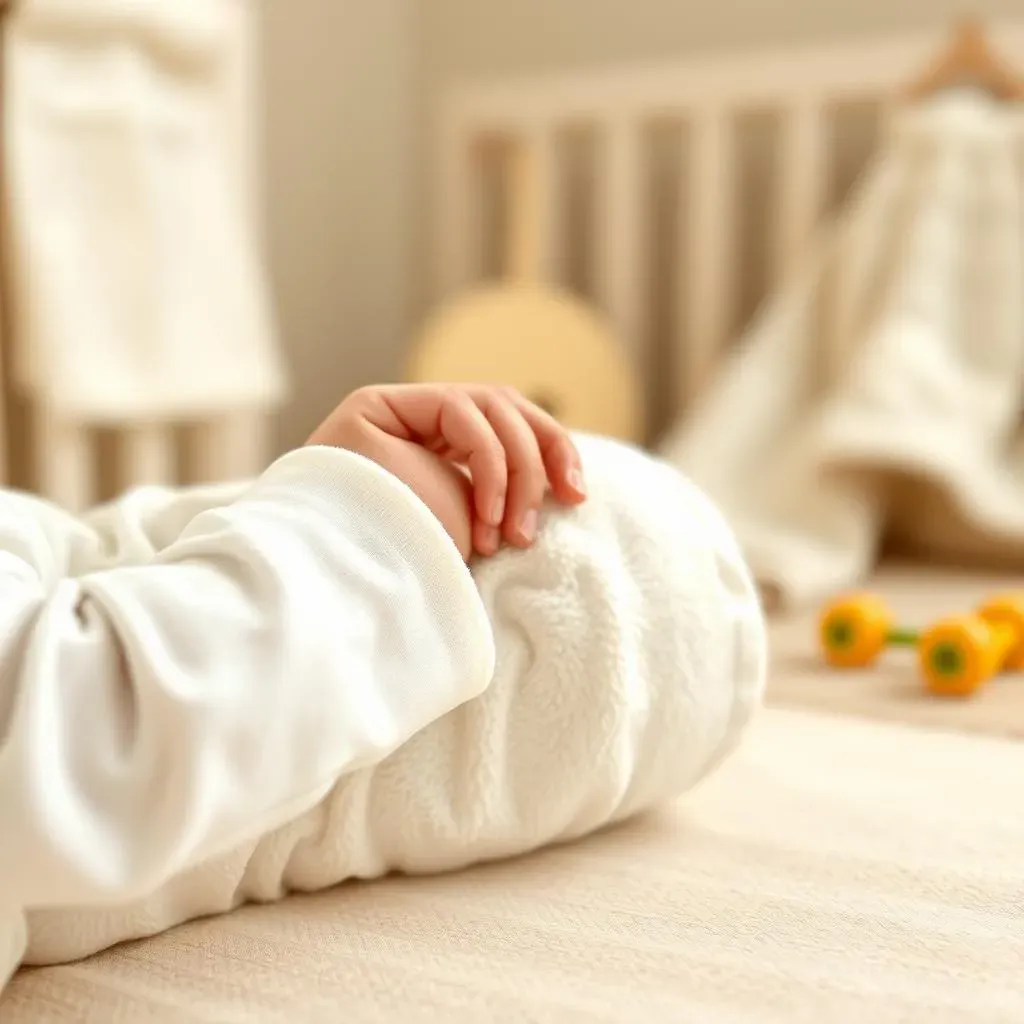
The Magic of the Pillowcase: Extra Comfort and Hygiene
Alright, let's amp up the comfort factor! Taking that towel pillow to the next level is super simple: grab a soft pillowcase. Using a pillowcase isn't just about making things extra cozy; it adds a layer of hygiene, too. Think about it – baby drool, spit-up, and all those little messes are way easier to clean up when you can just toss a pillowcase in the wash. Plus, a soft pillowcase can be gentler on your baby's delicate skin.
When choosing a pillowcase, opt for natural, breathable fabrics like cotton or muslin. Avoid anything with embellishments like buttons, zippers, or ties, as these can be a choking hazard. A simple, envelope-style pillowcase is your best bet. Before you slip it over your towel pillow, make sure it's clean and free of any loose threads or tags. And remember, safety first! Always supervise your baby when using a towel pillow, even with a pillowcase. It's all about adding an extra layer of comfort and cleanliness without compromising safety.
Step-by-Step: Assembling Your No-Sew Pillow
Ready to assemble your no-sew masterpiece? Here's how it goes: First, take the towel you've already folded into a pillow shape. Now, gently slide it into the pillowcase, making sure it fits snugly. You don't want any loose fabric bunching up, as this could be a hazard. Once the towel is inside, smooth out the pillowcase to get rid of any wrinkles or creases. A smooth surface is not only more comfortable but also safer for your baby.
Next, tuck in any excess fabric from the open end of the pillowcase. If it's an envelope-style pillowcase, this should be a breeze. If it's a standard pillowcase, you can fold the excess fabric underneath the pillow to keep it out of the way. The goal is to create a neat, compact package with no loose ends that your baby could grab onto. And remember, this is a temporary solution for supervised use only. Never leave your baby unattended with a towel pillow, even with a pillowcase. It's all about adding comfort and convenience without sacrificing safety.
Checking for Safety: A Final Once-Over
Before you let your little one snuggle up to their new pillow, give it one last safety check. Make sure the pillow feels firm and compact, not squishy or overly soft. There shouldn't be any loose threads, tags, or embellishments that could pose a choking hazard. The pillowcase should fit snugly and smoothly, with no bunching or loose fabric.
Safety Check | Description |
|---|---|
Firmness | Pillow should be compact, not squishy. |
Loose Parts | No loose threads, tags, or embellishments. |
Pillowcase Fit | Snug and smooth, no bunching. |
Supervision | Always supervise baby during use. |
And most importantly, never leave your baby unattended with the pillow. This is a temporary solution for supervised naps or tummy time, not a replacement for a safe sleep environment. If everything checks out, then you're good to go! Your baby can now enjoy a little extra comfort and support, thanks to your quick and easy no-sew towel pillow. Just remember to always prioritize safety and keep a close eye on your little one.
Tips for Ensuring Baby's Safety and Comfort with a Towel Pillow
Tips for Ensuring Baby's Safety and Comfort with a Towel Pillow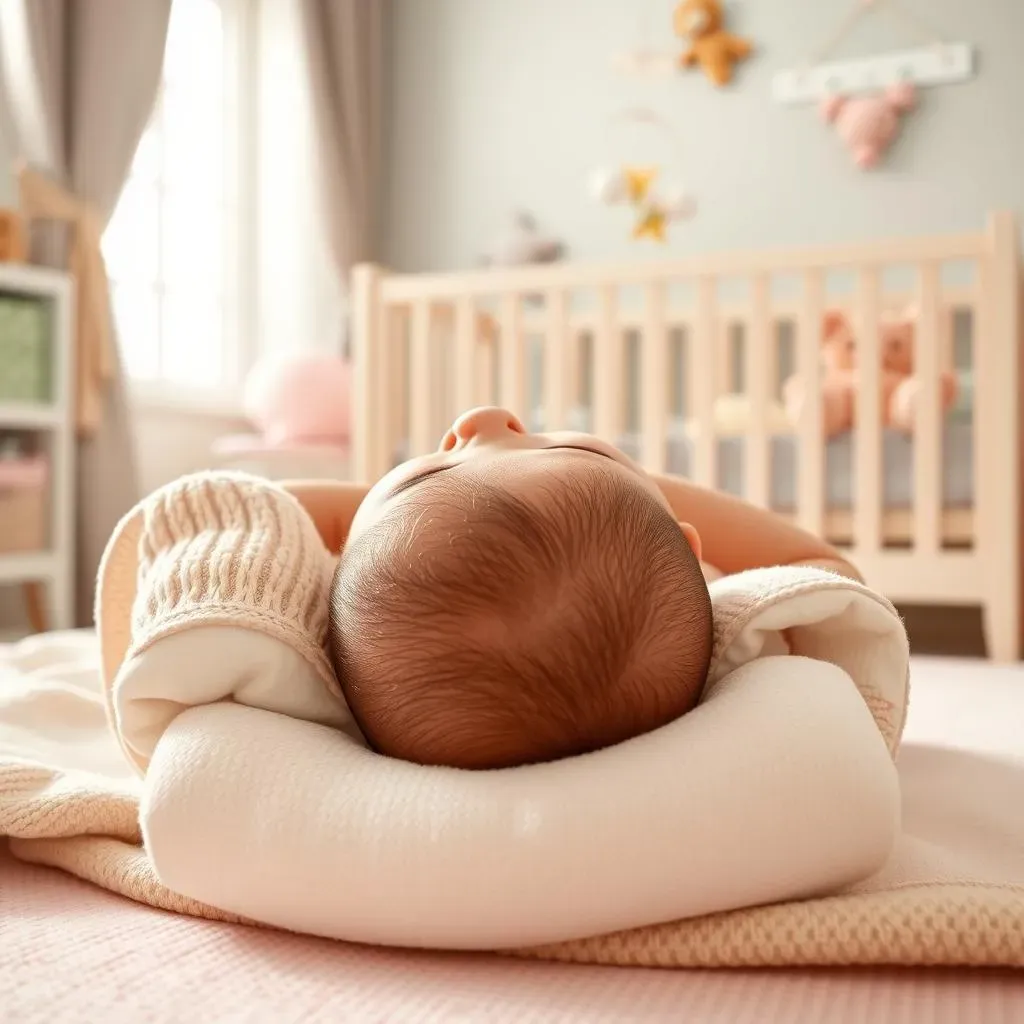
#1: The Right Firmness: Finding the Sweet Spot
so you've got your towel pillow ready, but how do you know if it's actually safe? The key is firmness. You want it firm enough to provide a little support, but not so firm that it's like a brick. Think Goldilocks – not too hard, not too soft, just right. A good way to test this is to press down on the pillow with your hand. It should give a little, but not collapse completely. If it feels too squishy, it's a no-go. Remember, a firm surface is crucial for preventing suffocation.
Also, consider your baby's age and size. A newborn will need less support than a slightly older baby who's starting to hold their head up. Adjust the thickness of the towel pillow accordingly. And always, always supervise your baby when using it. Never leave them unattended, especially in a crib or bassinet. This is a temporary solution for supervised naps or tummy time, not a replacement for a safe sleep environment. When in doubt, err on the side of caution and consult with your pediatrician. They can give you personalized advice based on your baby's specific needs.
#2: Positioning is Key: Head and Upper Back Support
Where you place that towel pillow is just as important as how firm it is. The goal is to support your baby's head and upper back, not just their neck. This helps keep their airway open and prevents their chin from tucking into their chest, which can restrict breathing. Imagine you're creating a gentle slope, rather than a sharp angle. You want your baby to be slightly elevated, but not propped up too high.
Avoid placing the pillow too high up, as this can cause discomfort or even breathing difficulties. A good rule of thumb is to position it so it supports the area from their shoulders to the back of their head. And be sure to avoid placing it directly under their neck, as this can strain their neck muscles. Always err on the side of caution and prioritize your baby's comfort and safety above all else. With a little practice, you'll find the perfect positioning for your little one. Just remember to keep it gentle, keep it supportive, and always keep a close eye on your baby.
#3: Constant Supervision: Never Leave Baby Unattended
This one can't be stressed enough: never, ever leave your baby unattended when using a towel pillow. We know you're busy, and it's tempting to sneak away for a few minutes, but it's just not worth the risk. Babies can easily roll over or get into a position that compromises their breathing. And because they don't have the strength to move themselves, they're completely dependent on you to keep them safe.
Think of it this way: using a towel pillow is like swimming – you wouldn't leave a baby unattended in the water, even for a second. The same goes for a towel pillow. It's a temporary solution for supervised use only. So, whether you're using it for tummy time, a quick nap, or just a little extra support, always keep your eyes on your baby. And if you need to step away, remove the pillow and place your baby on a firm, flat surface. It's all about prioritizing safety and being a responsible caregiver. With constant supervision, you can enjoy the benefits of a towel pillow without putting your baby at risk.
Safety Tip | Description |
|---|---|
Firmness | Ensure pillow is firm, not squishy. |
Positioning | Support head and upper back, not just neck. |
Supervision | Never leave baby unattended. |
Creative Variations: Other Uses for Towels as Temporary Baby Pillows
Creative Variations: Other Uses for Towels as Temporary Baby Pillows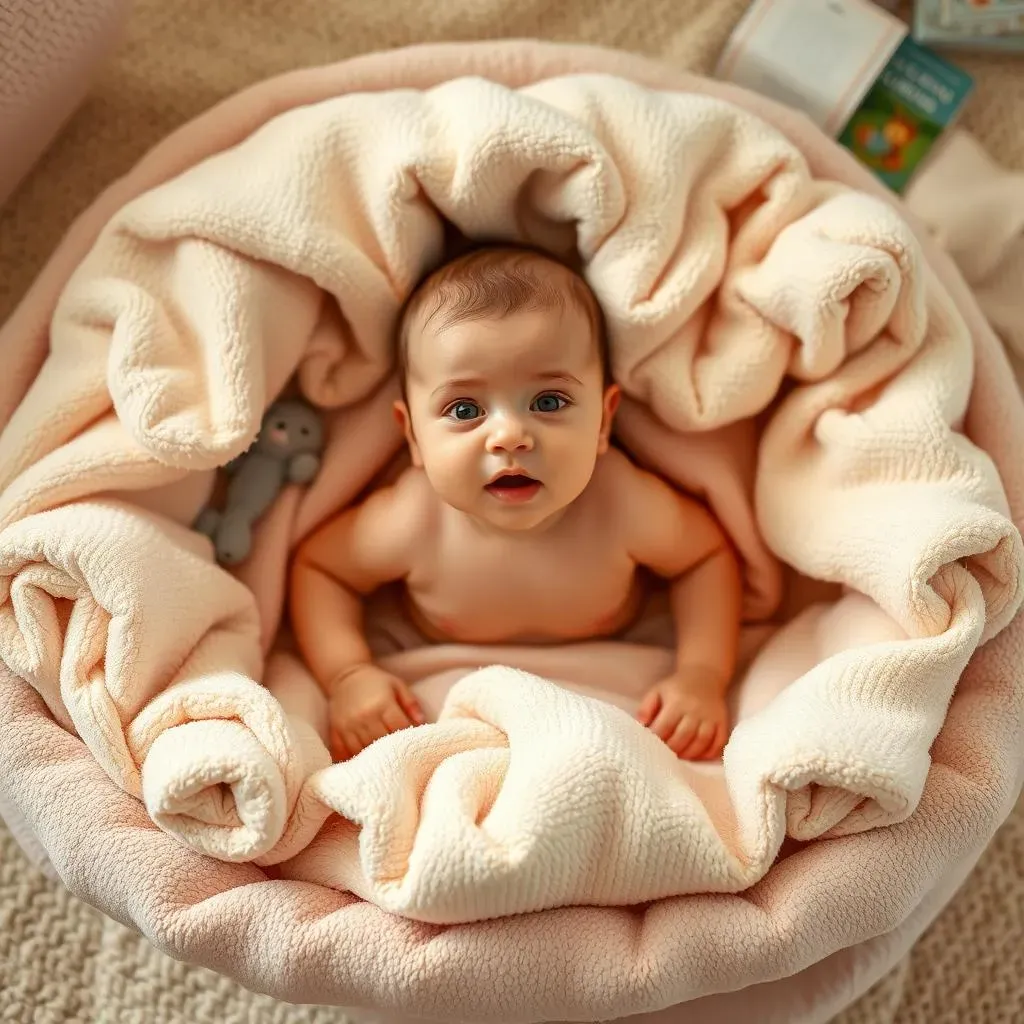
so you've mastered the basic towel pillow fold – now let's get creative! Towels are surprisingly versatile when it comes to baby support. One cool trick is using a rolled-up towel to create a gentle incline in a bassinet or crib (though, a disclaimer: always consult your pediatrician before trying this, and never leave a baby unattended with any kind of incline). Just roll the towel tightly and place it under the mattress, elevating the head slightly. This can be helpful for babies with reflux or congestion, but again, safety first! Make sure the incline isn't too steep, and always supervise your baby.
Another neat idea is using a towel to create a supportive "nest" for tummy time. Roll up a couple of towels and arrange them in a U-shape on the floor. Then, place your baby inside the U, with their chest supported by the towels. This can make tummy time more comfortable and help them build strength. You can also use a rolled-up towel as a makeshift nursing pillow. Just place it across your lap and position your baby on top, so they're at the right height for feeding. This can be a lifesaver when you're traveling or don't have your regular nursing pillow handy. And, of course, towels are great for cleaning up spills and messes – because let's face it, babies are messy!
But remember, no matter how you're using a towel, safety should always be your top priority. Never use a towel in a way that could restrict your baby's breathing or pose a suffocation hazard. And always supervise your baby closely. With a little creativity and caution, towels can be a handy and versatile tool for supporting your little one. So go ahead, get creative – just remember to keep it safe and fun!
Creative Use | Description | Safety Note |
|---|---|---|
Bassinet Incline | Rolled towel under mattress for slight elevation. | Consult pediatrician; never leave unattended. |
Tummy Time Nest | Rolled towels in U-shape for chest support. | Supervise closely. |
Nursing Pillow | Rolled towel across lap for feeding support. | Ensure baby's airway is clear. |
Wrapping Up: Safe, Simple, and Smart Baby Comfort
So, you've learned how to make a baby pillow with a towel – a simple, resourceful trick for those moments when you need a quick and comfy solution. Remember, while a towel pillow can be super handy, safety always comes first. Keep those precautions in mind, ensuring the towel is firm, secure, and never left with your baby unsupervised for long periods. Whether you're on the go or just need a little extra support for your little one, this DIY method can be a lifesaver. Just keep it temporary, always prioritize safety, and enjoy those precious, cozy moments with your baby!
